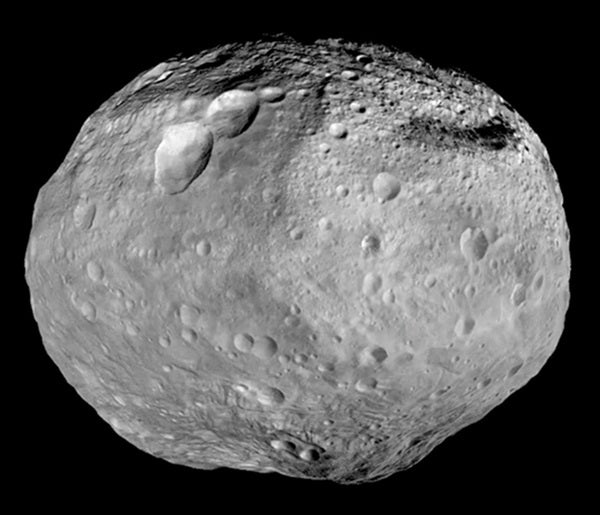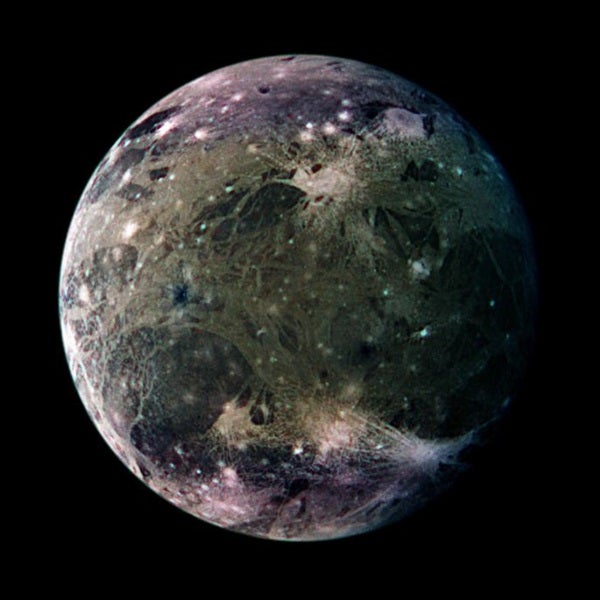Friday, January 20
Just before midnight strikes, Jupiter pokes above the eastern horizon. The giant planet resides in central Virgo, 4° due north of 1st-magnitude Spica. Shining at magnitude –2.1, Jupiter appears nearly 20 times brighter than Virgo’s luminary. The planet climbs highest in the south around the time morning twilight begins, and that’s the best time to view it through a telescope. Even a small instrument reveals the gas giant’s 38″-diameter disk and four bright moons.
Saturday, January 21
Mars continues to put on a nice show these January evenings. It appears some 30° above the southwestern horizon once twilight fades to darkness, though it’s easier to find by looking 6° (about one binocular field) to the upper left of brilliant Venus. The magnitude 1.0 Red Planet currently lies among the background stars of Pisces the Fish. A telescope shows the world’s 5″-diameter disk, but you likely won’t see any surface detail.
The Moon reaches apogee, the farthest point in its orbit around Earth, at 7:14 p.m. EST. It then lies 251,602 miles (404,914 kilometers) from Earth’s center.
Sunday, January 22
Although asteroid 4 Vesta reached opposition and peak visibility last week, the brightest minor planet of 2017 still shines at 6th magnitude. That’s barely bright enough to see with the naked eye from under a dark sky, though binoculars make the task much easier. To find Vesta, start at magnitude 1.2 Pollux in northern Gemini and then drop 3.6° due south to magnitude 3.6 Kappa (k) Geminorum. Vesta lies 2.6° east of Kappa this evening.
Monday, January 23
Venus appears brilliant in the early evening sky starting within a half-hour after sunset. Although it reached greatest elongation nearly two weeks ago, when it appeared 47° east of the Sun, the planet will remain the evening sky’s brightest point of light through late March. It currently shines at magnitude –4.7, some 10 times brighter than the second-brightest object, Jupiter. Venus crosses the invisible border between the constellations Aquarius and Pisces today. This region stands about one-third of the way from the southwestern horizon to the zenith an hour after the Sun goes down and doesn’t set until 9 p.m. local time. When viewed through a telescope this evening, Venus appears 28″ across and slightly less than half-lit.
Tuesday, January 24
The waning crescent Moon appears 4° north (upper left) of Saturn in this morning’s sky. The Moon pokes above the horizon just before 4:30 a.m. local time followed 10 minutes later by the planet. Saturn shines at magnitude 0.5 and remains a tempting target all week regardless of whether you use naked eyes or optical aid. When viewed through a telescope, the ringed planet shows a 15″-diameter disk surrounded by a stunning ring system that spans 35″ and tilts 27° to our line of sight.
Wednesday, January 25
The waning crescent Moon drops closer to the horizon this morning, when it meets up with Mercury. Our satellite lies about 7° (one binocular field) above the innermost planet, which in turn lies 8° above the southeastern horizon 30 minutes before sunrise. Shining at magnitude –0.2, the planet shows up nicely through the twilight glow. Mercury’s disk spans 6″ and appears about three-quarters-lit when viewed through a telescope.
Thursday, January 26
Observers who target Jupiter through their scopes this morning will be in for a treat. The planet’s moon Ganymede, the largest satellite in the solar system, will be crossing the gas giant’s north polar region. The transit lasts from 2:55 to 5:02 a.m. EST.
Friday, January 27
The variable star Algol in Perseus appears faintest at 2:15 a.m. EST tomorrow morning, when it shines at magnitude 3.4. If you start watching it immediately after darkness falls this evening, you can see it dim from its peak brightness (magnitude 2.1) to minimum and then rise back to maximum in a single night. This eclipsing binary star runs through a cycle from minimum to maximum and back every 2.87 days, but the drop from peak brightness and subsequent rise lasts only about 10 hours. Algol appears nearly overhead soon after darkness falls and descends toward the northwestern horizon after midnight.
New Moon occurs at 7:07 p.m. EST. At its New phase, the Moon crosses the sky with the Sun and so remains hidden in our star’s glare.
Saturday, January 28
The brightest star in the night sky puts on a nice show January evenings. Gleaming at magnitude –1.5, Sirius shines nearly four times brighter than the next brightest star visible from mid-northern latitudes: Arcturus in the constellation Boötes. (Although the planet Venus now shines more than three magnitudes brighter.) Sirius rises around sunset and ascends in the southeast throughout the evening hours.
Sunday, January 29
Although the Moon reached its New phase just two days ago, its rapid orbital motion carries it into view after the Sun goes down this evening. Look low in the west-southwest about an hour after sunset and you’ll see its 4-percent-lit crescent hanging in the twilight like the smile of the Cheshire Cat.












